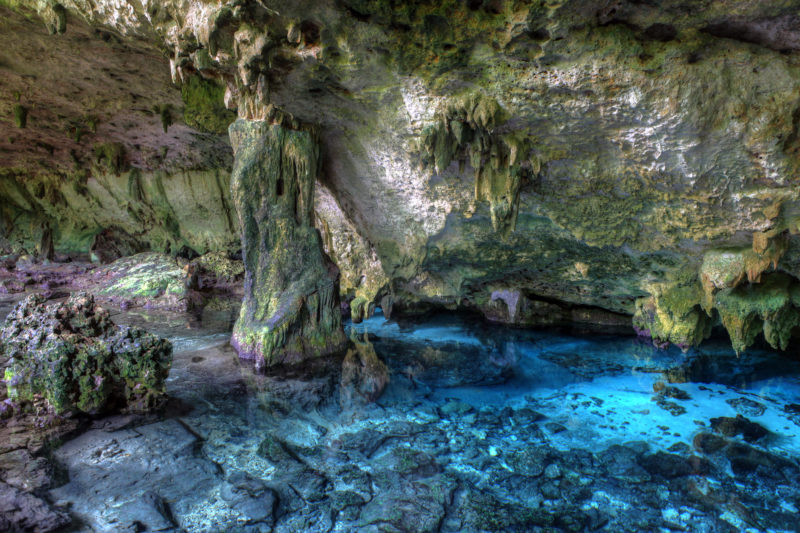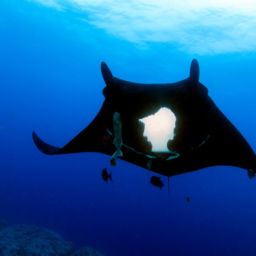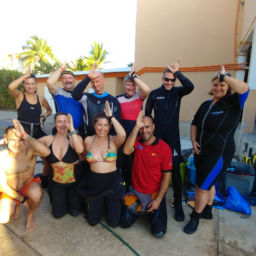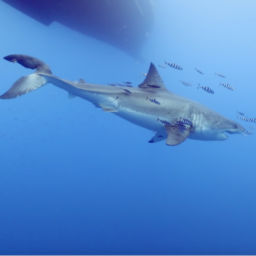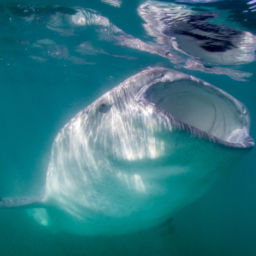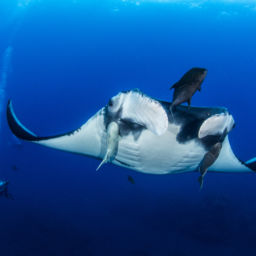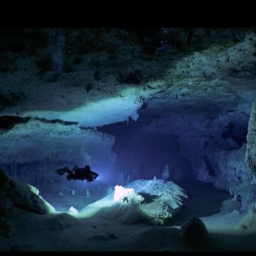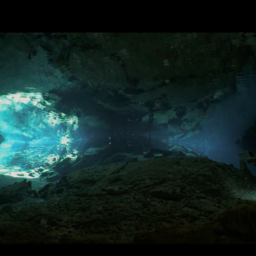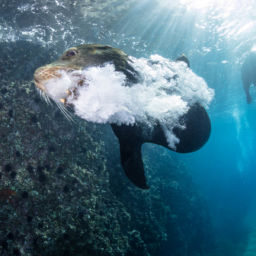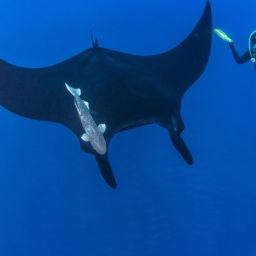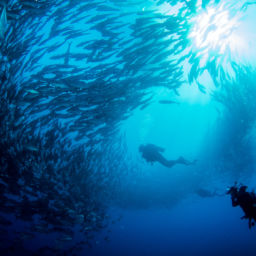There are plenty of freshwater cave systems in the world. But when it comes to diving, none compares to the sinkholes of Mexican’s Yucatan Peninsula. Gin-clear freshwater, Mayan history and an idyllic tropical-jungle setting make these cenotes world-class among cave and cavern dives. Many dive centers operate from Cancun south to Tulum. These offer everything from beginner cavern dives to full-fledged cave training, so there’s something or everyone. With that in mind, here are the Yucatan’s five top cenotes for scuba diving.
The Pit
In the jungle between Playa del Carmen and Tulum, is the Pit, one of the world’s most intriguing cavern dives. To reach the site, divers previously had to trek through the jungle and then giant stride 20 feet (6 m) into the water from the edge of the sinkhole. A recently constructed dirt road leading to the entrance and the addition of stairs to the water, however, have made the Pit much more accessible. The deepest cenote in Quintana Roo at 391 feet (119 m), the Pit offers breathtaking visibility and stalactites of all sizes in the first 100 feet (30 m). At that depth there’s a hydrogen sulfide cloud that divers can penetrate to descend into complete darkness at around 130 feet (40 m).
Casa Cenote
Casa Cenote, also called Cenote Tankah, connects one of world’s longest underwater cave systems, Nohoch Na Chich, with the ocean. In the middle of a lush mangrove forest, diving in Casa Cenote offers the unique feeling of diving under a tropical rainforest. The dive never exceeds 30 feet (8 m), and follows the course of the surface river, with big open areas. Because of the river’s connection to the ocean, Casa Cenote features a fresh- and saltwater mix. This environment hosts both fresh- and saltwater fish. Small caves along the sides of the cenote also occasionally hold manatees, so dive slowly and keep your eyes peeled.
Angelita
At around 10 miles (17 km) south of Tulum, Angelita is the furthest south of the area’s cenotes. A short walk into the jungle reveals a cenote that descends directly to 200 feet (60 m) with no side passages or offshoots. Angelita, meaning “little angel,” also holds a mix of salt and fresh water. At around 100 feet (30 m), there is an eerie hydrogen sulfide cloud that sits atop the cenote’s saltwater layer. Here, in the depths of the cenote, divers will see trees and branches. They peek out of the cloud, creating a surreal scene. Huge stalactites stud the cenote’s shallow walls, offering another fascinating sight. Angelita is popular among technical divers because of its depth. Recreational divers, though, should not exceed depth limits if they descend beneath the sulfurous cloud.
Dos Ojos
Perhaps the most famous cenote of all, Dos Ojos, meaning “two eyes,” is actually two connected cenotes, with a shared cavern zone. Part of a larger cave system, there are 28 known sinkhole entrances in the Dos Ojos system. Exploration continues today. There’s an opportunity for both cavern and cave dives here, shallow and simple enough for divers of all levels. Divers walk a short distance through the jungle to the entrance, where there are bathrooms, changing facilities and concrete tables for gear.
The first of the dives takes place along the opening of the “Second Eye.” Here’ there’s lots of daylight and immaculate visibility. The second dive, also known as the Bat Cave, requires divers to follow a line that twists and turns through tight swim-throughs, where light begins to disappear into the distance behind them. Divers will eventually emerge into a stalactite-filled chamber where bats reside in the hundreds.
Pet Cemetery
Despite its sinister name, Pet Cemetery cenote offers all the best of Mexican jungle diving. Its name comes not from the Stephen King novel, but rather from the multiple animal skeletons within the cenote, including the fossilized remains of an extinct prehistoric camel. Part of the second-largest cave system in the world, it’s further along the same access road that delivers divers to Dos Ojos. Much of the dive is at only 10 feet (3 m), so snorkelers can explore here too. The cave system is filled with stalactites and stalagmites, all in superb visibility. Beware though — divers must have good buoyancy control before attempting the dive, as the column formations are quite fragile.
These are just a few of the area’s top cenotes for diving, with many more systems to explore. Mexico’s unique cenotes draw divers from all over the world, but before you explore here, make sure you’ve got the proper certifications and knowledgeable guides.


